
How to Use 150W DC-DC Boost Converter 10-32V to 12-35V 6A: Examples, Pinouts, and Specs
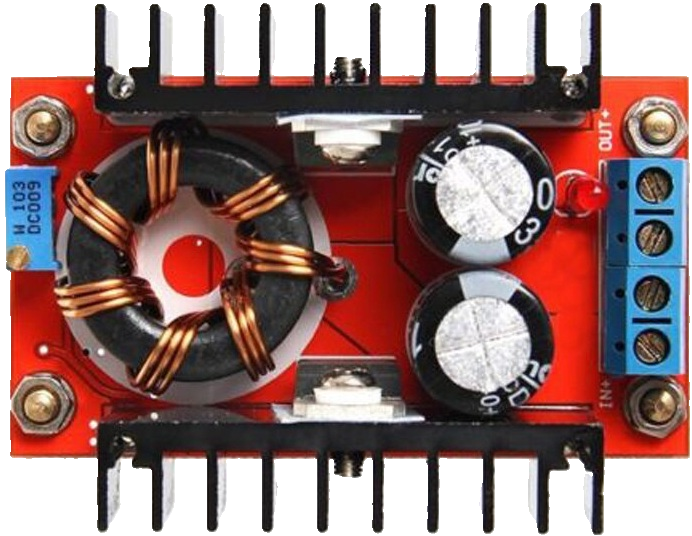
 Design with 150W DC-DC Boost Converter 10-32V to 12-35V 6A in Cirkit Designer
Design with 150W DC-DC Boost Converter 10-32V to 12-35V 6A in Cirkit DesignerIntroduction
The 150W DC-DC Boost Converter is a power conversion device designed to step up a DC voltage from a lower input range (10-32V) to a higher output range (12-35V). It is capable of delivering a maximum output current of 6A, making it suitable for applications requiring increased voltage and power. This component is widely used in battery-powered systems, solar power setups, LED drivers, and other electronic projects where voltage boosting is necessary.
Explore Projects Built with 150W DC-DC Boost Converter 10-32V to 12-35V 6A
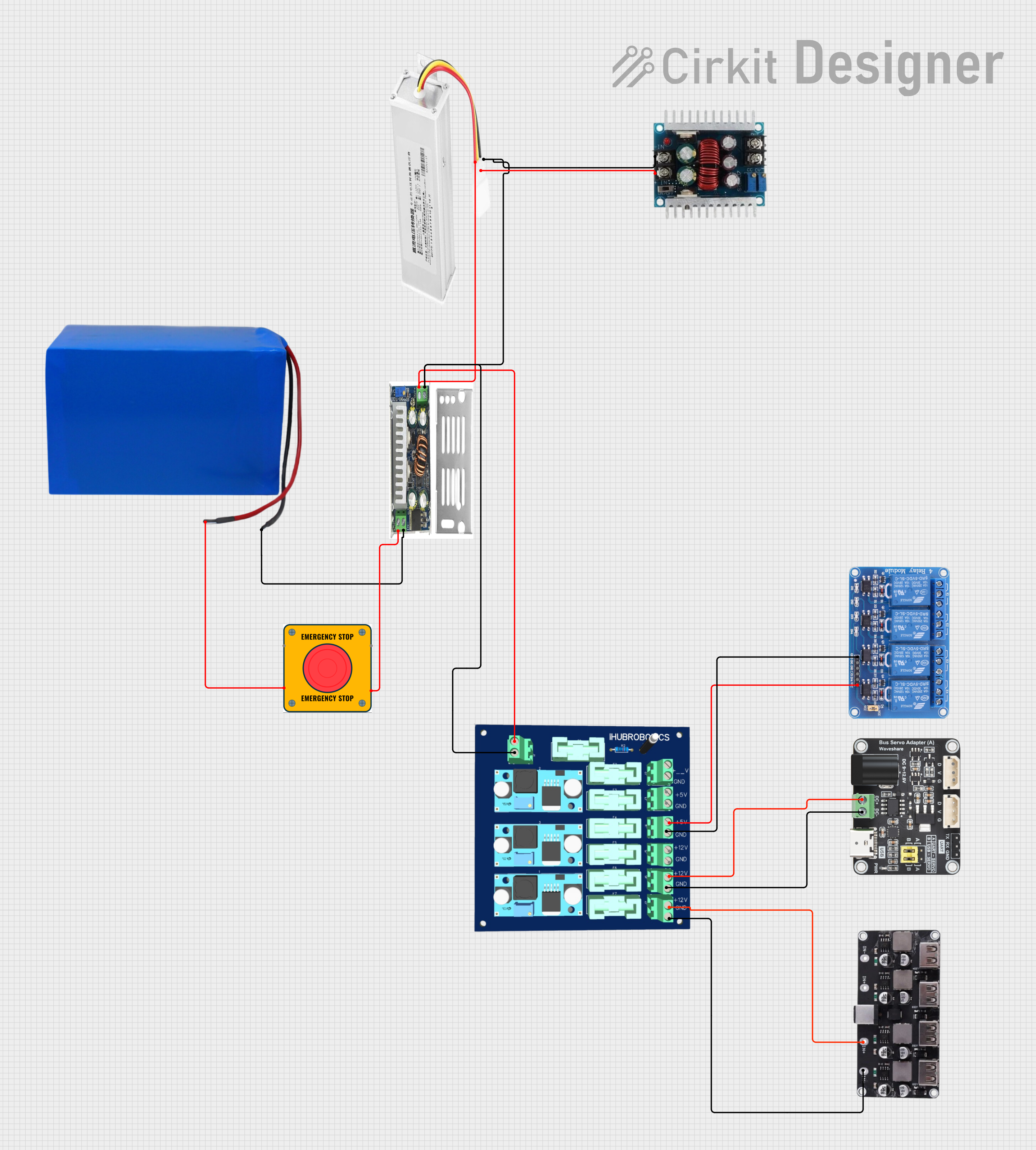
 Open Project in Cirkit Designer
Open Project in Cirkit Designer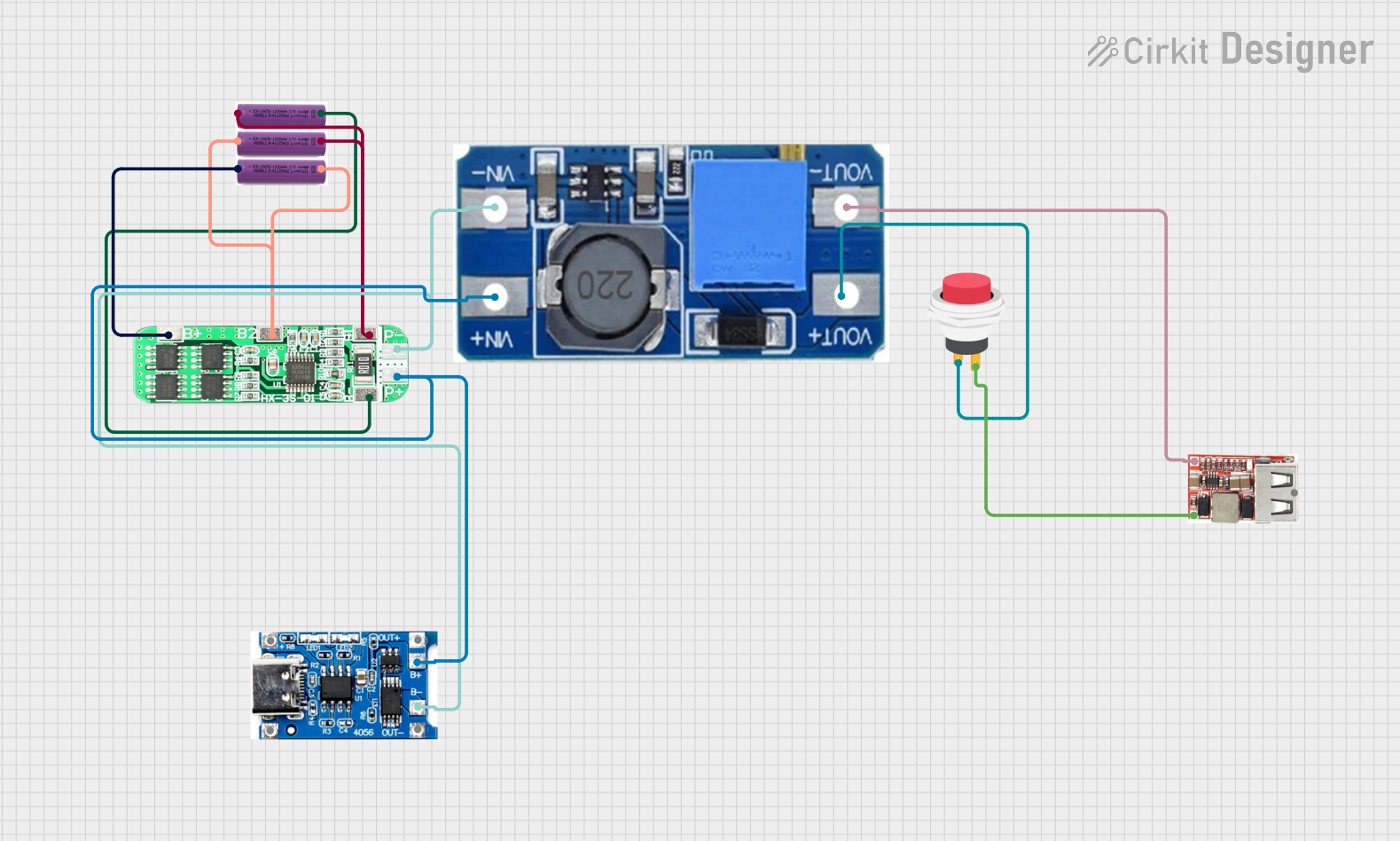
 Open Project in Cirkit Designer
Open Project in Cirkit Designer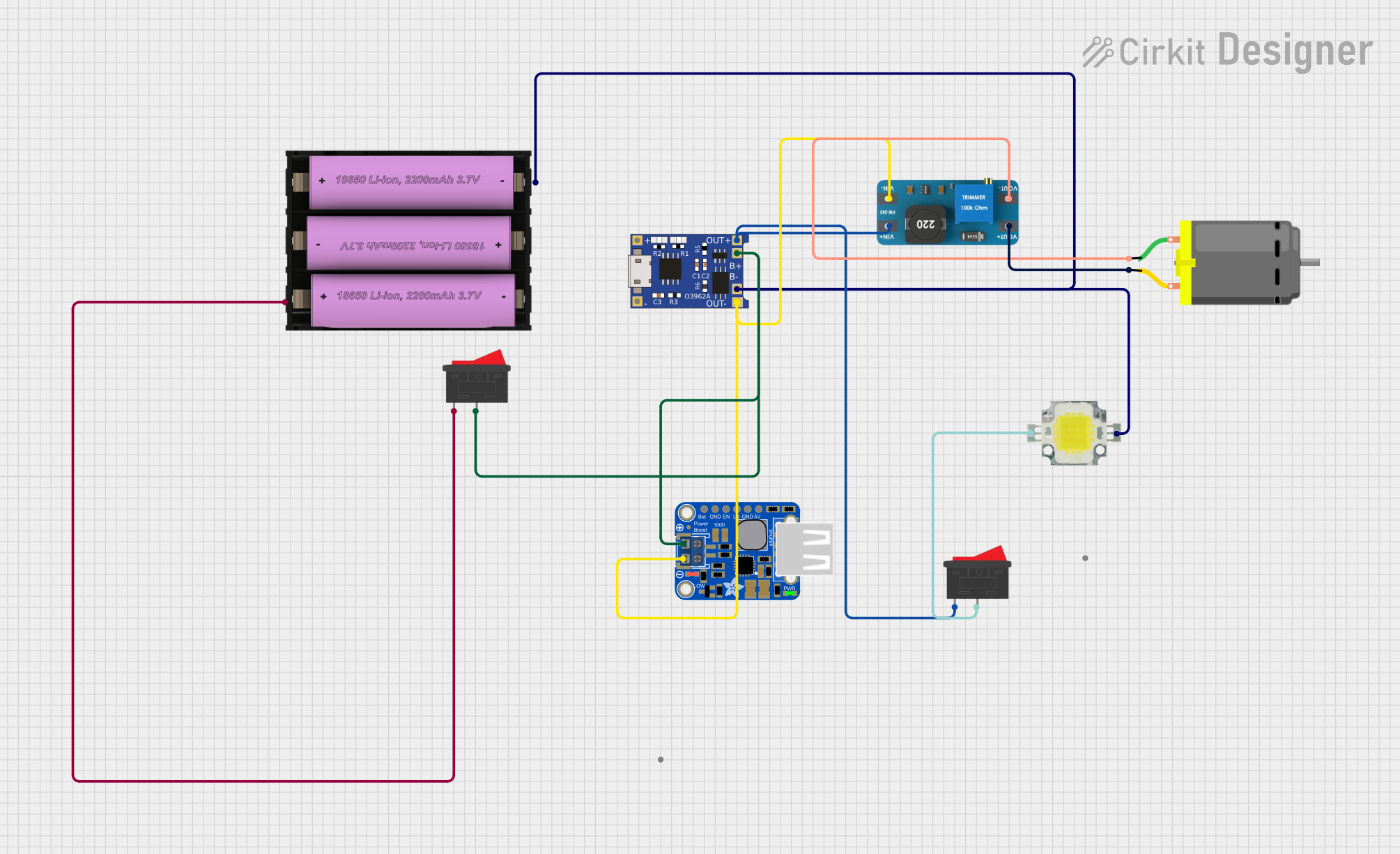
 Open Project in Cirkit Designer
Open Project in Cirkit Designer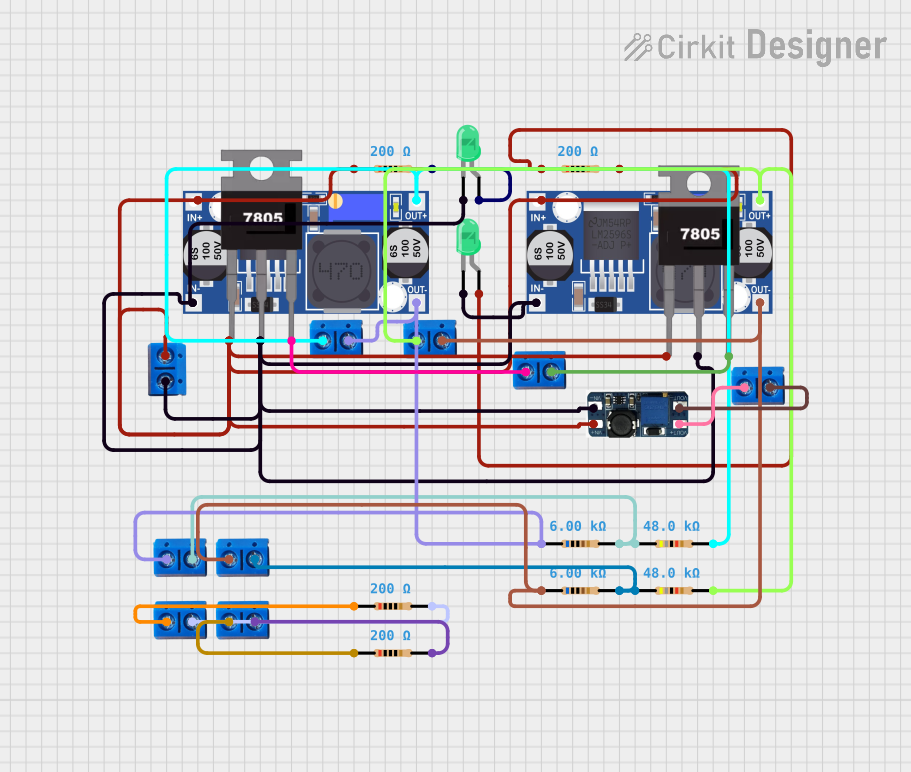
 Open Project in Cirkit Designer
Open Project in Cirkit DesignerExplore Projects Built with 150W DC-DC Boost Converter 10-32V to 12-35V 6A

 Open Project in Cirkit Designer
Open Project in Cirkit Designer
 Open Project in Cirkit Designer
Open Project in Cirkit Designer
 Open Project in Cirkit Designer
Open Project in Cirkit Designer
 Open Project in Cirkit Designer
Open Project in Cirkit DesignerCommon Applications
- Powering high-voltage devices from low-voltage batteries
- Solar panel voltage regulation
- LED lighting systems
- DIY electronics and robotics projects
- Automotive electronics
Technical Specifications
The following table outlines the key technical details of the 150W DC-DC Boost Converter:
| Parameter | Value |
|---|---|
| Input Voltage Range | 10V to 32V |
| Output Voltage Range | 12V to 35V (adjustable) |
| Maximum Output Current | 6A |
| Maximum Output Power | 150W |
| Efficiency | Up to 96% |
| Operating Temperature | -40°C to +85°C |
| Dimensions | 60mm x 52mm x 22mm |
| Weight | ~70g |
Pin Configuration and Descriptions
The module has four main connection points for input and output. The table below describes each pin:
| Pin Label | Description |
|---|---|
| VIN+ | Positive input voltage terminal (10-32V) |
| VIN- | Negative input voltage terminal (ground) |
| VOUT+ | Positive output voltage terminal (12-35V adjustable) |
| VOUT- | Negative output voltage terminal (ground) |
Usage Instructions
How to Use the Component in a Circuit
Connect the Input Voltage:
- Attach the positive terminal of your DC power source (e.g., battery or power supply) to the
VIN+pin. - Connect the negative terminal of the power source to the
VIN-pin.
- Attach the positive terminal of your DC power source (e.g., battery or power supply) to the
Connect the Output Load:
- Attach the positive terminal of your load (e.g., motor, LED, or other device) to the
VOUT+pin. - Connect the negative terminal of the load to the
VOUT-pin.
- Attach the positive terminal of your load (e.g., motor, LED, or other device) to the
Adjust the Output Voltage:
- Use the onboard potentiometer to adjust the output voltage. Turn the potentiometer clockwise to increase the voltage and counterclockwise to decrease it.
- Use a multimeter to measure the output voltage while adjusting to ensure accuracy.
Power On:
- Once all connections are secure, power on the input source. The module will boost the input voltage to the desired output level.
Important Considerations and Best Practices
- Ensure the input voltage is within the specified range (10-32V). Exceeding this range may damage the module.
- Do not exceed the maximum output current of 6A or the maximum power rating of 150W.
- Use a heatsink or active cooling if the module operates at high power for extended periods.
- Always measure the output voltage with a multimeter before connecting sensitive devices.
- Avoid short circuits between the input and output terminals.
Example: Using with an Arduino UNO
The 150W DC-DC Boost Converter can be used to power an Arduino UNO from a low-voltage battery. Below is an example setup:
- Connect a 12V battery to the
VIN+andVIN-terminals of the boost converter. - Adjust the output voltage to 9V using the potentiometer.
- Connect the
VOUT+andVOUT-terminals to the Arduino UNO's power input jack.
Here is a simple Arduino code example to blink an LED while powered by the boost converter:
// Simple LED Blink Example
// This code blinks an LED connected to pin 13 of the Arduino UNO.
// Ensure the boost converter is set to output 9V for safe operation.
void setup() {
pinMode(13, OUTPUT); // Set pin 13 as an output
}
void loop() {
digitalWrite(13, HIGH); // Turn the LED on
delay(1000); // Wait for 1 second
digitalWrite(13, LOW); // Turn the LED off
delay(1000); // Wait for 1 second
}
Troubleshooting and FAQs
Common Issues and Solutions
No Output Voltage:
- Check the input voltage to ensure it is within the 10-32V range.
- Verify all connections are secure and polarity is correct.
- Inspect the module for visible damage or overheating.
Output Voltage Not Adjustable:
- Ensure the potentiometer is not damaged or stuck.
- Use a multimeter to confirm the output voltage while adjusting.
Module Overheating:
- Reduce the load current or output power to stay within the 150W limit.
- Add a heatsink or active cooling to dissipate heat.
Load Not Powering On:
- Verify the output voltage matches the load's requirements.
- Check for loose or incorrect connections.
FAQs
Q: Can I use this module to charge a battery?
A: Yes, but ensure the output voltage is set to the appropriate charging voltage for the battery type. Use a current-limiting circuit if necessary.
Q: What happens if I exceed the input voltage range?
A: Exceeding the input voltage range (10-32V) can damage the module permanently. Always use a regulated power source.
Q: Can I use this module with a solar panel?
A: Yes, the module can boost the variable output of a solar panel to a stable voltage. Ensure the panel's voltage is within the input range.
Q: Is the output voltage stable under varying loads?
A: The module provides a stable output voltage under most conditions, but extreme load variations may cause minor fluctuations.